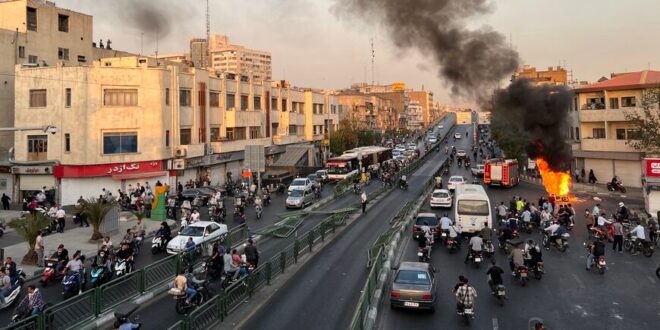Protests in Iran have continued to spread to universities, presenting a new challenge to the Islamic Republic.
The protests in Iran that started in mid-September over the death of a young woman in police custody have spread to universities, which have been a historic hotbed of unrest in the country during times of upheaval.
Social media users have shared videos of university students across the country protesting, including in major cities such as Esfahan and Tehran. The slogans have become more determined as well, with chants such as “This is the year of blood, Seyyed Ali will be overthrown,” in reference to Supreme Leader Ayatollah Ali Khamenei, and “We’ll fight, we’ll fight, we’ll take Iran back.”
One of the more chaotic scenes took place at Sharif University of Technology in Tehran. Typically noted for housing some of the brightest minds in the country, it has become known lately as a major battleground in the protests. Earlier in October, reports came out of the university of mass arrests after students had protested in support of Mahsa Amini, the young woman who died after being apprehended by the country’s infamous morality police. The country’s riot police descended upon the university, apprehending all protestors.
Yesterday, there was a clash after student members of the Basij tried to barricade the student eating hall by flipping tables and blocking the entrances. The event took place after female students tried to enter the segregated eating hall in protest against the segregation rules. Pictures of the spectacle, of Basij members trying to block the entrances with tables as if trying to stop a flood, went viral. Eventually, the protestors entered the building and began celebrating and chanting. Iran’s state media accused the protestors of chanting “foul slogans and breaking norms.” Today after the eating hall was closed, students sat outside and set up picnics in protest against the university’s decision to close the eating hall and keep it segregated.
Today, a spokesman for President Ebrahim Raisi’s administration, Ali Bahadory Jahromi, attempted to give a speech at Khajeh Nassir Toosi University but was shouted down by university students. Iranian state media said that Bahadory Jahromi cut his speech short because the students were yelling at each other and insulting one another.
What started out as protests over the death of a young woman in police custody over a loose hijab has turned into a six-week movement, albeit one that is still leaderless. During the protests, various demands are shouted and there have even been anonymous statements published online on what the protestors are seeking. Regardless of the specifics, the Islamic Republic is facing a difficult ordeal. If it loosens some restrictions, it may be enough to placate some protestors — but others may see it as a sign of weakness and demand the outright overthrow of the Islamic Republic. If they continue to remain inflexible, it will continue to cause more aggravation and increase the number of protests. Given that Khamenei is a direct product of the 1979 revolution, he has studied carefully the causes of the collapse of the previous government and does not want to repeat them, if he is able.
 Eurasia Press & News
Eurasia Press & News


